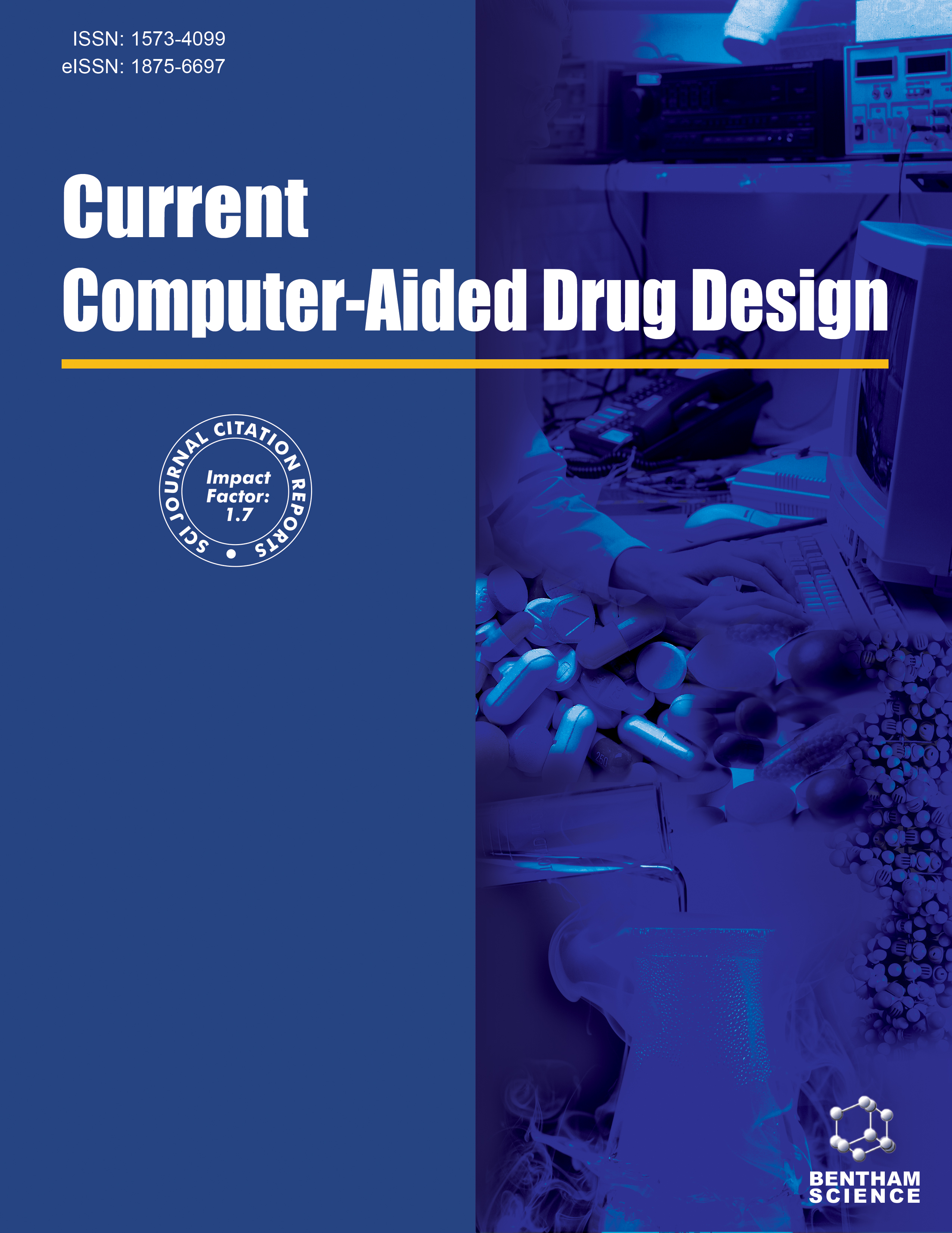- Home
- A-Z Publications
- Current Computer - Aided Drug Design
- Previous Issues
- Volume 8, Issue 2, 2012
Current Computer - Aided Drug Design - Volume 8, Issue 2, 2012
Volume 8, Issue 2, 2012
-
-
Editorial [Hot Topic: Topological and Electrotopological Descriptors of Molecules: Fundamental Principles and Applications to Computer Aided Molecular Design - Part I (Guest Editors: Subhash C. Basak and Guillermo Restrepo)]
More LessAuthors: Subhash C. Basak and Guillermo RestrepoIt is with great pleasure, a sense of honor, and humility that we took up the responsibility of editing a special issue of Current Computer-Aided Drug Design (CCADD) dedicated to Professor Lemont B. Kier to celebrate his eightieth birthday. One of us (Basak) has been using some of Professor Kier’s concepts and methods since the 1970s, when he started his research on the use of mathematical structural descriptors in the cha Read More
-
-
-
To Monty Kier, A Friendly Tribute
More LessTo pay tribute to Lemont B. Kier in this special issue of CCADD is an honor and a joy. Monty and I have been associated for many years, but his influence on my scientific life began well before we met. The year was 1970, and my mind was occupied with two major projects, writing up my PhD thesis and finding a suitable institution abroad for post-doctoral studies. At that time, I saw -- and immediately bought -- a book edit Read More
-
-
-
A Core Molecular Theory of Sleep and Aging
More LessModels of water in the presence of amino acid side chains have revealed significant variability in the local water structure, reflecting the variations in the hydropathic states of the side chains. These models also reveal patterns of water cavities, termed chreodes, that may exist near the surface of a protein. These patterns have been invoked to explain the facilitated diffusion of ligands to an active site on the protein surface. The Read More
-
-
-
Development of Structure Information from Molecular Topology for Modeling Chemical and Biological Properties: A Tribute to the Creativity of Lemont Burwell Kier on his 80th Birthday
More LessThis review is a salute to Monty Kier’s creativity. Emphasis is placed on creative aspects in the development of the representation of molecular topological structure information and the resultant formalisms: molecular connectivity and electrotopological state (E-State). Less attention is given to detailed analysis of individual papers and the generally well known books and book chapters. This discussion reveals creative paths th Read More
-
-
-
QSAR and QSPR Model Interpretation Using Partial Least Squares (PLS) Analysis
More LessCarefully developed quantitative structure-activity and structure-property relationship models contain detailed information regarding how differences in the molecular structure of compounds correlate with differences in the observed biological or other physicochemical properties of those compounds. The ability to understand the behavior of existing molecules and to design new molecules is facilitated by using an obj Read More
-
-
-
Use of Vertex Index in Structure-Activity Analysis and Design of Molecules
More LessAuthors: Chandan Raychaudhury and Debnath PalThe last few decades have witnessed application of graph theory and topological indices derived from molecular graph in structure-activity analysis. Such applications are based on regression and various multivariate analyses. Most of the topological indices are computed for the whole molecule and used as descriptors for explaining properties/activities of chemical compounds. However, some substructural descriptors i Read More
-
-
-
Electrotopological State Atom (E-State) Index in Drug Design, QSAR, Property Prediction and Toxicity Assessment
More LessAuthors: Kunal Roy and Indrani MitraOver the last two decades, a great deal of research has been oriented towards determination of correlation between molecular structures and a variety of responses exhibited by such molecules. Extensive attempts have been made to quantitatively determine the influence of structural fragments on the property profile of molecules through the development of quantitative structure-activity/property/toxicity relationship ( Read More
-
-
-
Importance of Kier-Hall Topological Indices in the QSAR of Anticancer Drug Design
More LessAuthors: Sisir Nandi and Manish C. BagchiAn important area of theoretical drug design research is quantitative structure activity relationship (QSAR) using structural invariants. The impetus for this research trend comes from various directions. Researchers in chemical documentation have searched for a set of invariants which will be more convenient than the adjacency matrix (or connection table) for the storage and comparison of chemical structures [1]. Molecular Read More
-
Volumes & issues
-
Volume 21 (2025)
-
Volume 20 (2024)
-
Volume 19 (2023)
-
Volume 18 (2022)
-
Volume 17 (2021)
-
Volume 16 (2020)
-
Volume 15 (2019)
-
Volume 14 (2018)
-
Volume 13 (2017)
-
Volume 12 (2016)
-
Volume 11 (2015)
-
Volume 10 (2014)
-
Volume 9 (2013)
-
Volume 8 (2012)
-
Volume 7 (2011)
-
Volume 6 (2010)
-
Volume 5 (2009)
-
Volume 4 (2008)
-
Volume 3 (2007)
-
Volume 2 (2006)
-
Volume 1 (2005)
Most Read This Month
Article
content/journals/cad
Journal
10
5
false
en


